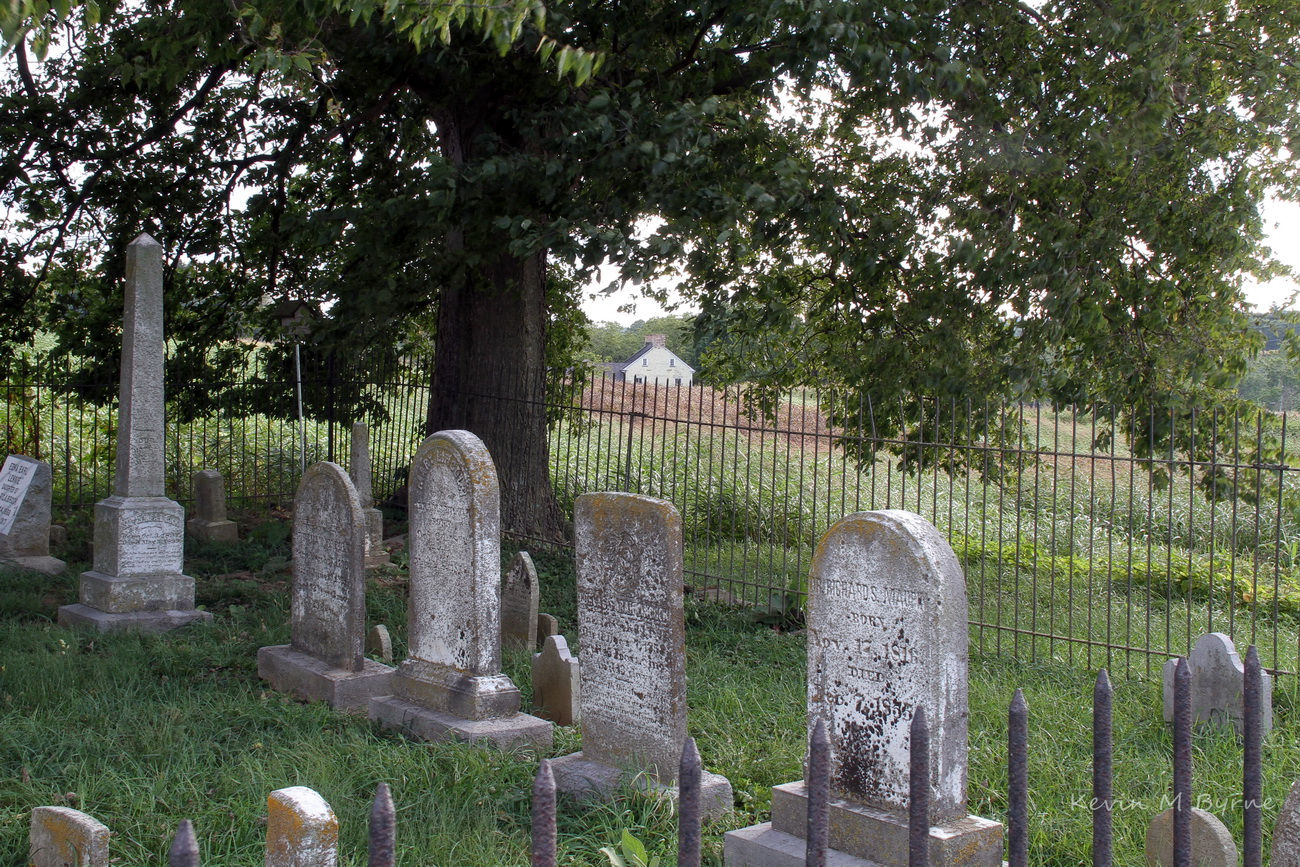
Editor’s note: The following post is by William Dollarhide, who has not only provided excellent tips of both the serious and witty variety, but is an accomplished Genealogical Publishing Company author. As Mr. Dollarhide excels not only an author but also as a gifted speaker and award winning genealogist, we are always delighted to share his advice, wisdom and wit with our readers. This is part one of his coverage of the topic of locating and visiting cemeteries.
Locating and Visiting Cemeteries – Part One
DOLLARHIDE GENEALOGY RULE #21: To understand the living, you have to commune with the dead–but don’t commune with the dead so long that you forget that you are living! (From “Midnight in the Garden of Good and Evil.”)
Although I would not consider myself to be obsessed with death, burials, or other ghoulish activities, I have had some wonderful experiences in cemeteries. I am sure I am not alone. Since visiting cemeteries is part of what we do to find information about our ancestors, every genealogist has a cemetery story. These stories may include the weird problems associated with cemeteries as well as the wonderful discoveries that can be found there.
To most genealogists, the first problem is always that of finding the exact location of a cemetery where an ancestor was supposed to have been buried. But once the cemetery has been located, other problems prevail, such as finding a gravestone in an old unkempt graveyard with no finding aids available.
Here are some thoughts on finding and visiting cemeteries that may be of use to genealogists:
Finding-Tools for Locating Cemeteries
Death Certificates and Funeral Homes
A death certificate may give the name of a cemetery where the deceased was interred, as well as the name of a funeral home. The funeral home (or its successor) is probably still in business and should be contacted. To do this, use the “Yellow Book” (a directory of funeral homes) to find a funeral home today. Funeral home directors are clearly the best experts on the location of cemeteries in a particular area.
The “Yellow Book” is distributed annually to every funeral home in North America. Anyone should be able to call or visit a local funeral home and request to use their directory to find an address and phone number for any other funeral home. Fortunately, the same “Yellow Book” database is now on the Internet at www.funeralnet.com where the address and phone number for virtually every funeral home in the U.S. and Canada can be found online.
GENEALOGY RULE #3: When visiting a funeral home, wear old clothes, no makeup, and look like you have about a week to live–the funeral director will give you anything you ask for if he thinks you may be a customer soon.
Obituaries
Another possible source for locating a cemetery where an ancestor was buried is to see if a printed obituary for the deceased person includes information about where the body was interred. Obituaries are found in newspapers published near the place where a person died. Many old newspapers are available to genealogical researchers on microfilm, and they usually are located in a public library, college library, archives, genealogical society, historical society, or some other institution near the place of death of the subject.
A two-volume publication, “Newspapers in Microform,” published by the Library of Congress, is the best listing of what newspapers might be found on microfilm. The publication acts as a means of identifying and then borrowing rolls of film, which can be used at a local library through the national Interlibrary Loan System at more than 6,000 libraries in the U.S.
In addition, state libraries or state archives usually have the best collection of newspapers for a particular state. Most state archives now have a website on the Internet, where you may discover a detailed review of county newspapers.
The Internet is also a good place to search for obituaries that may have been published for a particular area. Check www.cyndislist.com under that category, or use your browser to search the web for the keyword, “obituaries.”
Using the GNIS to Find a Cemetery
There is another great tool for locating a particular cemetery that may not be obvious to researchers. The most complete listing and locations of named cemeteries in the U.S. can be found at the United States Geological Survey (USGS) website at http://nhd.usgs.gov/gnis.html.
This site has the USGS’s Geographic Names Information System (GNIS), which encompasses some two million place names (map features) in America, of which about 107,000 are cemeteries. The GNIS includes the largest list of named cemeteries published anywhere. (A few years ago, a very expensive printed publication advertised as the “most complete list of cemeteries in America” was produced, showing about 25,000 cemeteries–less than one-fourth the number that can be found in the GNIS listing.)
The GNIS cemetery names were taken from the detailed maps of the 7.5 x 7.5 minute series published by the USGS. (Each map in this series covers 7.5 minutes of latitude and 7.5 minutes of longitude, a rectangle representing an area about 6-7 miles wide by about 7-8 miles deep.) For the 7.5 series, more than 50,000 maps were required to show the entire U.S. and its possessions.
In addition to cemeteries, all other named features from the maps were extracted, including cities, towns, villages, hills, mountains, valleys, oil fields, airports, post offices, streams, lakes, and any other place on a map with a name. For years, genealogists were compelled to pay up to $3.00 per map for the USGS 7.5 series maps. Today, they are all accessible from the Internet and can be downloaded directly to your printer.
Image credit: By Kevin M. Byrne (Own work) [CC BY-SA 3.0 (http://creativecommons.org/licenses/by-sa/3.0)], via Wikimedia Commons.




